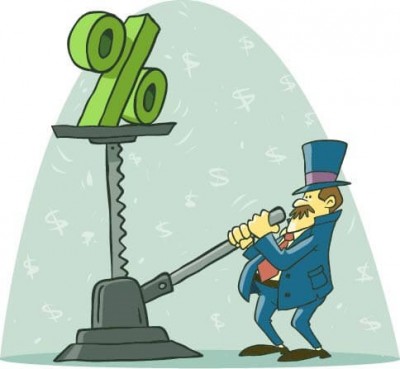Yesterday’s not-so-unexpected news of the Federal Reserve raising its benchmark interest rate to 0.25% ended the Zero Interest Rate Policy (ZIRP) it instituted nearly a decade ago. No can kicking this time, so what does that mean for your own finances? Probably not much in the near term. One small interest rate hike is unlikely to have much of an immediate impact on your budget, but that doesn’t mean you should ignore the increase.
Most likely this first rate hike will be the first of many. However the Fed has signaled that any future raises will happen “gradually,” hinting that further increases will be slow in coming, so it will give people a window to lock in current, still-low rates before they creep higher.
Below is a good summary provided by Reuter’s Liz Weston of what to expect when it comes to some main personal finance areas affected by an interest rate increase:
SAVINGS
Average savings account rates have crept up from a quarter percentage point two years ago to just under a half percentage point now, but do not expect much more of an increase any time soon.
Banks will be much quicker to pass along rate increases to borrowers than they will be to savers, McBride said.
Savers who want higher rates should search out competing offers from online banks, many of which currently offer rates of 1 percent or a little above.
MORTGAGES
Mortgages tend to follow the 10-year Treasury, but a steady increase in short-term rates eventually will trickle up to home loans.
People with adjustable rate mortgages should consider refinancing into hybrids with rates in the low-to-mid 3 percent range that will fix the rates for the next five to seven years before becoming adjustable.
Financing into a 30-year fixed mortgage means a larger jump to rates around 4 percent. That might make sense for those who do not expect to move, but involves a substantial increase in monthly payments.
HOME EQUITY BORROWING
Variable-rate home equity lines of credit (HELOCs) will respond quickly to rising interest rates. On top of that, many HELOCs taken out just before the real estate recession are approaching the end of their 10-year interest-only repayment periods, meaning much bigger payments are ahead if borrowers do not act now.
Those with balances on HELOCs should consider rolling that debt into their mortgage with a cash-out refinance if they can.
CREDIT CARDS
Fed rate hikes are likely to be quickly reflected in variable credit card rates, which can adjust without the usual 45-day notice that issuers have to give when they raise rates on their own.
Low-rate offers will not disappear, though, since issuers have found them to be a good way to attract new customers in a competitive environment. What could change over time is how long the initial teaser rates last. If rates continue to rise, we might see a reduction in the duration of the zero-percent periods from a year or longer to some shorter period.
Borrowers who act now can still get zero percent offers for as long as 21 months, and use them to help pay off their debt before rates march higher.
AUTO LOANS
Borrowing for a new car is likely to remain cheap in the near future thanks to fierce competition among automakers.
Automakers can use their captive finance arms to keep rates low for new cars, getting most of their profit from car sales rather than from the financing. At some point, though, their cost of funds will rise enough to force rate increases.
Rates for used cars are likely to climb before that, though, since there are not captive lenders to keep lending costs low, he said.
